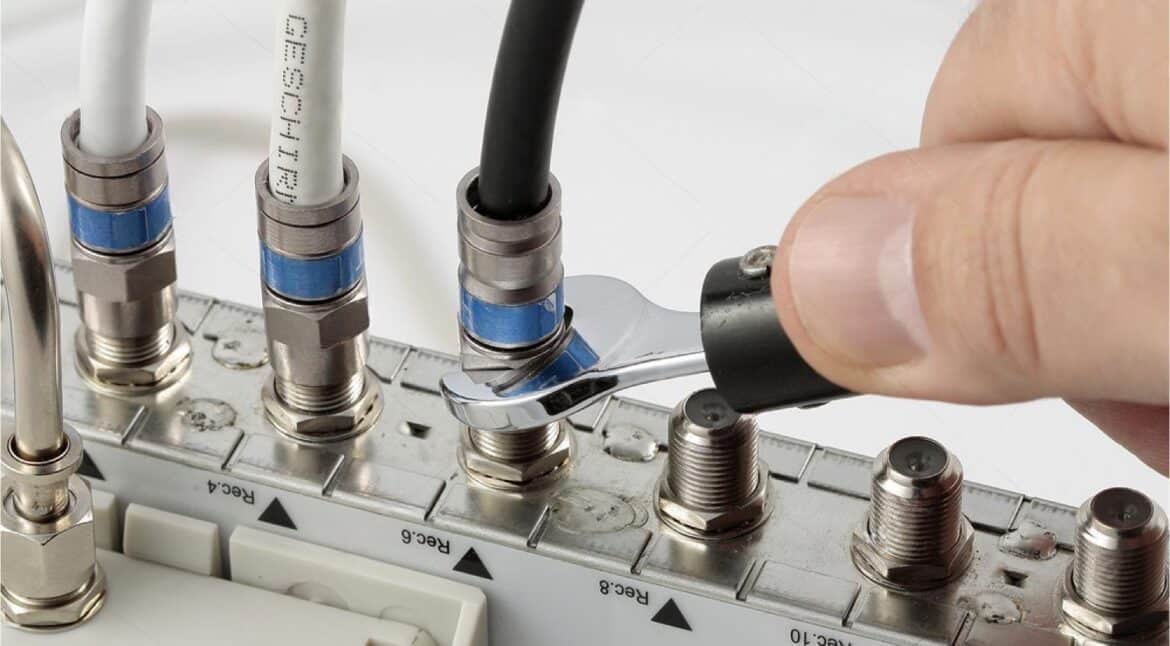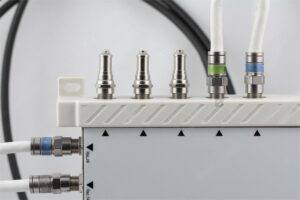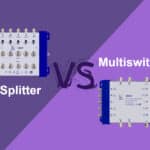A satellite multiswitch plays a vital role in distributing signals from antennas to multiple devices, facilitating simultaneous satellite TV access across various locations such as homes, public venues, and commercial establishments. With the importance of maintaining signal integrity in mind, this article delves into methods and techniques for effectively minimizing multiswitch insertion loss to ensure optimal distribution of satellite TV signals.
Understanding Insertion Loss
Insertion loss is a metric used to measure the signal attenuation that occurs as a signal pass through a device, typically expressed in decibels (dB). In the context of satellite TV signal distribution, multiswitch insertion loss refers to the decrease in signal strength as it passes through a satellite multiswitch. Therefore, lower insertion loss values are preferable to ensure that the quality of transmitted TV signals remains unaffected by passing through the multiswitch.
Strategies for Reducing Multiswitch Insertion Loss
1. Optimized Component Selection
Choosing components and materials with low loss is crucial. High-quality connectors, low-loss circuit board materials, and premium distribution network components effectively reduce insertion loss.
Connectors:
Selecting high-quality, low-loss connectors is essential. Common connector types include F-type connectors, and N-type connectors, among others. Ensuring good quality and connection methods minimizes signal loss at connectors.
Circuit Board Materials:
Using low-loss circuit board materials reduces signal transmission losses. For example, selecting materials with low dielectric constant and dielectric loss, such as PTFE (Polytetrafluoroethylene), can be advantageous.
Distribution Network Components:
Internal distribution network components like distributors and filters should also be of high quality to ensure signal transmission quality. Opting for components with low insertion loss and high isolation reduces signal loss and cross-interference.
2. Design Optimization
By optimizing the distribution network and signal transmission paths, signal loss can be minimized. A well-thought-out layout and structure are key to reducing insertion loss.
Distribution Network Optimization:
Optimizing the distribution network within the multiswitch ensures minimal signal loss during distribution. This involves optimizing the wiring and connection methods of the multiswitch, as well as selecting appropriate distribution network topologies such as star, tree, or ring topologies.
Signal Transmission Path Optimization:
Designing rational signal transmission paths aims to minimize signal loss during transmission. This includes reducing losses when signals pass through components such as connectors and filters and selecting signal transmission paths that are as short as possible while maintaining high quality.
Layout and Structure Design:
Rational design of the multiswitch’s layout and structure is crucial in minimizing signal loss during transmission. This involves avoiding excessively long signal paths or cross-interference, reducing reflections and attenuation when signals pass through components, and ensuring the stability and reliability of signal transmission.
3. Controlling Cable Quality
Selecting high-quality coaxial cables, controlling the length of the connection lines, and ensuring good connection methods can minimize the signal loss caused by connection lines.
Choosing High-Quality Coaxial Cables:
Coaxial cables are commonly used in satellite TV signal transmission. Selecting high-quality, low-loss coaxial cables is crucial. Premium coaxial cables typically have low loss, high interference resistance, and good impedance matching characteristics, effectively reducing signal loss during transmission.
Controlling the Length of Connection Lines:
The length of connection lines affects the degree of signal loss during transmission. It’s essential to control the length of connection lines to avoid excessive signal attenuation. When designing the multiswitch, try to place receiving equipment closer to the multiswitch to reduce the length of connection lines.
Ensuring Good Connection Methods:
Ensure that connection lines are connected properly to reduce contact resistance and losses caused by poor contact between connectors. Securely and correctly connecting connectors, avoiding looseness and poor contact, can reduce signal loss during transmission.
4. Using Satellite Amplifiers
Satellite amplifiers can compensate for signal losses during long-distance signal transmission or when connecting multiple receiving devices, thereby improving signal transmission quality.
Determining the Need for Satellite Amplifiers:
When designing the distribution system, it’s essential to evaluate the distance of signal transmission and the number of receiving devices connected. If the signal needs to be transmitted over long distances or connected to multiple receiving devices with significant signal attenuation, using satellite amplifiers may be necessary to enhance the signal.
Choosing the Right Satellite Amplifier:
Selecting an appropriate satellite amplifier is crucial based on actual requirements. Consider factors such as signal transmission distance, frequency range, amplification factor, etc., when choosing the model and specifications of the satellite amplifier.
Placing the Satellite Amplifier:
Position the satellite amplifier as close to the signal source as possible and away from the receiving devices. This ensures that the signal is amplified before transmission, minimizing losses during signal transmission.
Adjusting Amplifier Gain:
Adjust the gain of the satellite amplifier according to the actual situation to ensure that the signal is properly amplified without causing over-amplification or distortion. The amplifier gain should be adjusted based on the signal transmission distance and the sensitivity of the receiving devices.
Avoiding Over-Amplification:
Over-amplification can lead to signal distortion and increased noise. Therefore, it’s essential to avoid over-amplification. When adjusting the gain of the satellite amplifier, ensure that the signal is not amplified beyond the processing range of the receiving devices.
5. Environmental Control
Maintaining a conducive working environment and controlling factors such as temperature and humidity can reduce the impact of external conditions on signal transmission, thereby lowering insertion loss.
Maintaining Suitable Temperature and Humidity:
Satellite multiswitches should be placed in a suitable working environment, avoiding exposure to excessively high or low temperatures and humidity levels. Changes in temperature and humidity can affect device performance and signal transmission quality. Therefore, it’s essential to choose an appropriate installation location and take measures to maintain suitable environmental conditions.
Good Ventilation and Heat Dissipation:
Ensure that there is adequate ventilation and heat dissipation around the multiswitch to prevent overheating from affecting device performance. When selecting an installation location, consider ventilation conditions and avoid placing the multiswitch in enclosed or poorly ventilated areas.
Dust and Water Protection Measures:
Implement measures to protect the multiswitch from dust, moisture, and liquid intrusion. Place the multiswitch in a dry and clean environment, avoiding exposure to rainwater or moisture.
Lightning Protection:
Considering that satellite multiswitches may be susceptible to natural disasters such as lightning strikes, appropriate lightning protection measures should be taken, such as installing lightning arrestors and grounding wires, to ensure the safe operation of the equipment.
6. Regular Maintenance and Inspection
Regularly maintain and inspect the satellite multiswitch to promptly identify and rectify issues that may lead to increased insertion loss, ensuring stable signal transmission quality.
Equipment Cleaning:
Regularly clean the external and internal parts of the satellite multiswitch to remove dust, dirt, and foreign objects. Pay particular attention to connectors and ventilation openings, as they are more prone to dust accumulation and should be cleaned periodically.
Check Connection Lines:
Periodically inspect connection lines and connectors to ensure they are securely and reliably connected. Loose or faulty connections may result in signal interruptions or quality degradation.
Inspect Power Supply and Power Lines:
Check the status of the power supply lines and power sources to ensure proper power supply. Regularly inspect power lines for damage or ageing and replace them promptly if necessary.
Check Equipment Status Indicators:
Monitor the status indicators on the equipment to ensure normal operation. Abnormal status indicators may indicate equipment issues that need to be addressed promptly.
Measure Signal Strength and Quality:
Regularly measure signal strength and quality to assess the stability and quality of signal transmission. If signal strength or quality degradation is detected, inspect the equipment promptly and take appropriate measures.
Firmware and Software Updates:
Regularly check the firmware and software versions of the equipment to ensure they are up to date. Regular firmware and software updates can improve equipment performance and stability, reducing insertion loss.
Maintain Maintenance and Inspection Records:
Establish maintenance and inspection records to document the time, content, and results of each maintenance and inspection. This helps track equipment status and performance changes, enabling timely detection of issues and appropriate actions.
Conclusion:
By employing the aforementioned methods, it is possible to effectively reduce the insertion loss in satellite multiswitches, enhance signal transmission quality, and ensure users experience clear and stable television viewing.
You also can get more informatio:n From Wikipedia: Multiswitch and Insertion Loss






